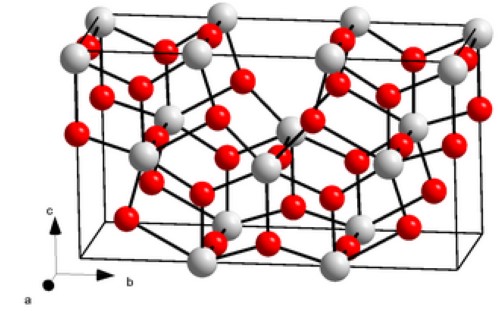Building Blocks Of Progress: Tantalum Oxide Powder And Its Influence In Materials Science
Introduction
In the field of materials science, progress depends on the identification of new components with specific properties. Tantalum oxide powder, despite its unassuming appearance, plays an important role across various sectors. This article reviews its function and impact within materials science.
 [1]
[1]
Figure 1. Tantalum Oxide
Tantalum Oxide: A Fundamental Component
Before considering its applications, the fundamental characteristics of tantalum oxide must be understood. Tantalum, a rare transition metal, reacts with oxygen to form tantalum oxide (Ta₂O₅). This compound exhibits a set of defined properties.
l High dielectric constant: Tantalum oxide has a high dielectric constant, enabling capacitors to store a greater amount of charge per unit volume. Consequently, this allows the minimisation of electronic components.
l Chemical stability: The oxide exhibits chemical stability and resists corrosion and decomposition even in aggressive chemical environments. This ensures a consistent performance in its applications.
l Thermal resistance: Its thermal stability qualifies it for high-temperature applications. It is used as a protective coating for components in aerospace, automotive, and industrial machinery.
l Low leakage current: Capacitors that incorporate tantalum oxide demonstrate low leakage currents, thereby enhancing charge retention. This improvement contributes to more efficient energy consumption and longer battery life.
Applications in Materials Science
The defined properties of tantalum oxide are applied in several materials science processes:
1. Modern material synthesis: Researchers utilise tantalum oxide as a precursor in the synthesis of advanced materials, including thin films and nanoparticles. These materials are employed in electronic devices, high-temperature coatings and composite structures.
2. Nanotechnology: The catalytic properties of tantalum are applied in nanotechnology to produce nanomaterials that contain tantalum. This is used in the development of electronic components, energy storage systems and various sensor technologies.
Further reading: What is tantalum oxide used for?
Conclusion
In summary, tantalum oxide powder is a standard component within the field of materials science. Its specific properties facilitate developments in electronic devices, coatings and advanced materials, contributing to the manufacture of devices that are smaller, more energy efficient and reliable.
Discover high quality Tantalum Oxide Powder at Stanford Advanced Materials (SAM), a reliable supplier known for strict quality standards. A range of grades and custom solutions are available. Please send an enquiry if you are interested.
Reference:
[1] Tantalum pentoxide. (18/08/2023). In Wikipedia. https://en.wikipedia.org/wiki/Tantalum_pentoxide

 Bars
Bars
 Beads & Spheres
Beads & Spheres
 Bolts & Nuts
Bolts & Nuts
 Crucibles
Crucibles
 Discs
Discs
 Fibers & Fabrics
Fibers & Fabrics
 Films
Films
 Flake
Flake
 Foams
Foams
 Foil
Foil
 Granules
Granules
 Honeycombs
Honeycombs
 Ink
Ink
 Laminate
Laminate
 Lumps
Lumps
 Meshes
Meshes
 Metallised Film
Metallised Film
 Plate
Plate
 Powders
Powders
 Rod
Rod
 Sheets
Sheets
 Single Crystals
Single Crystals
 Sputtering Target
Sputtering Target
 Tubes
Tubes
 Washer
Washer
 Wires
Wires
 Converters & Calculators
Converters & Calculators
 Chin Trento
Chin Trento



